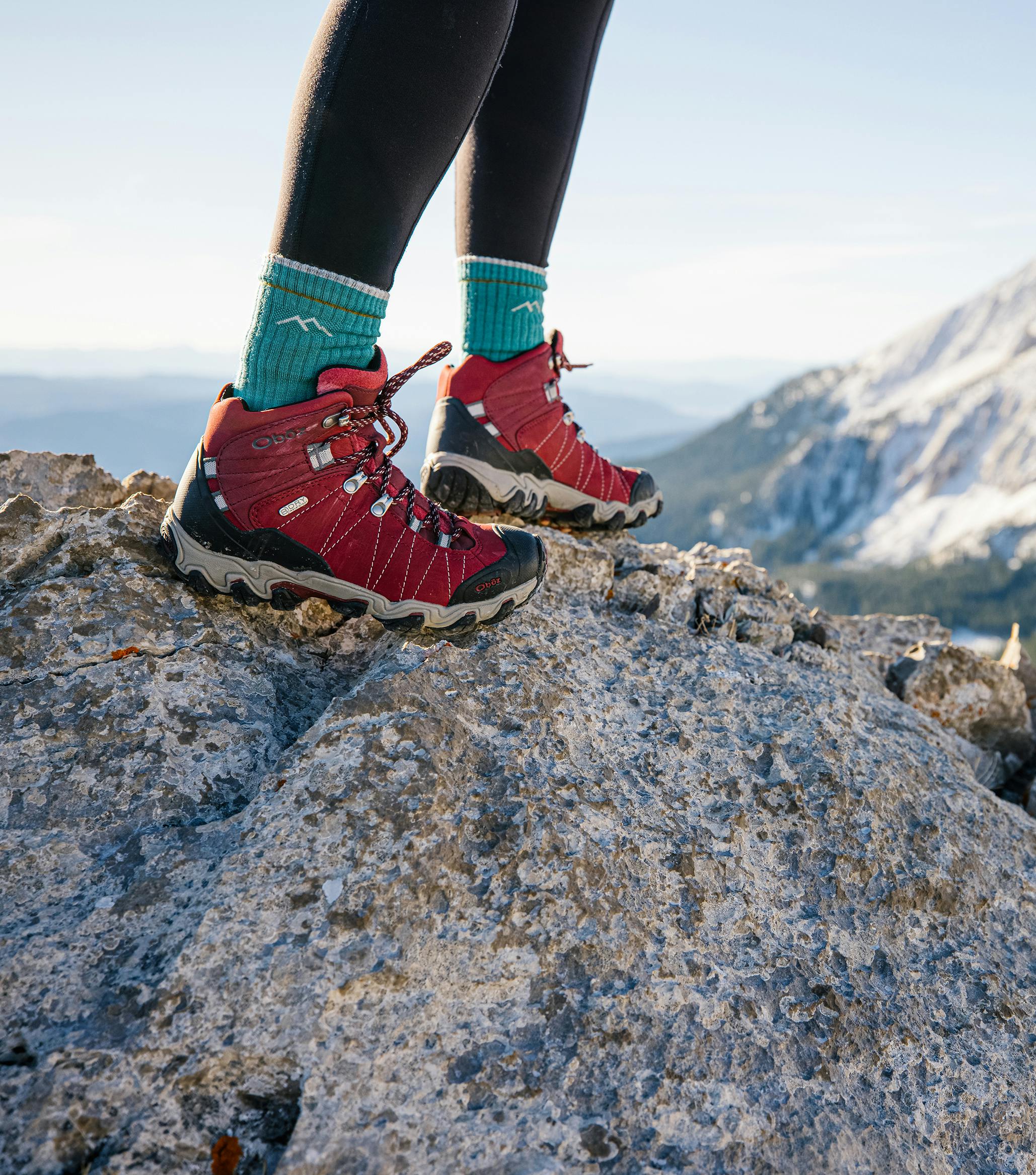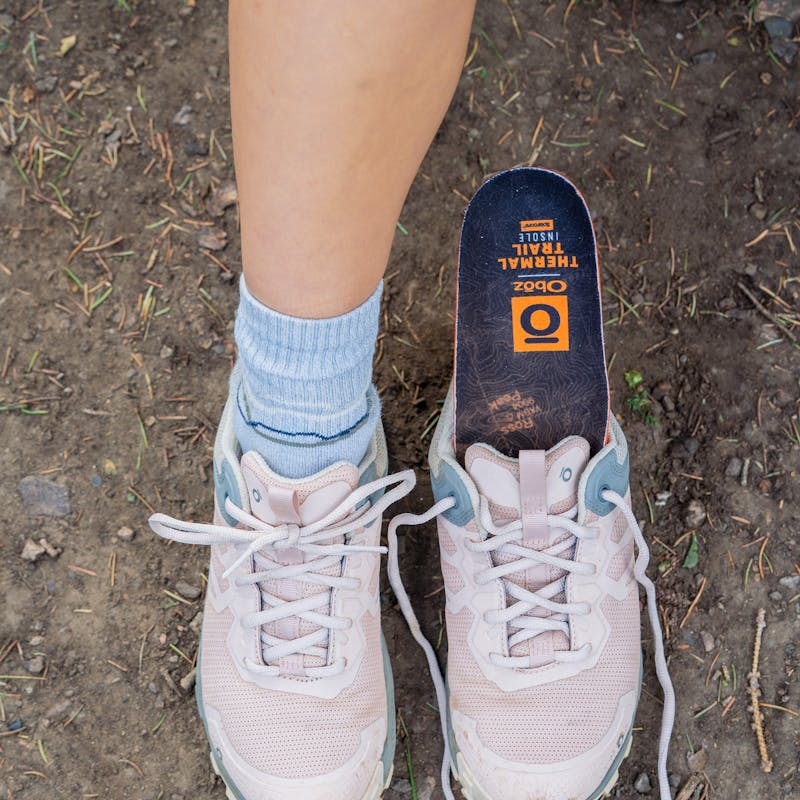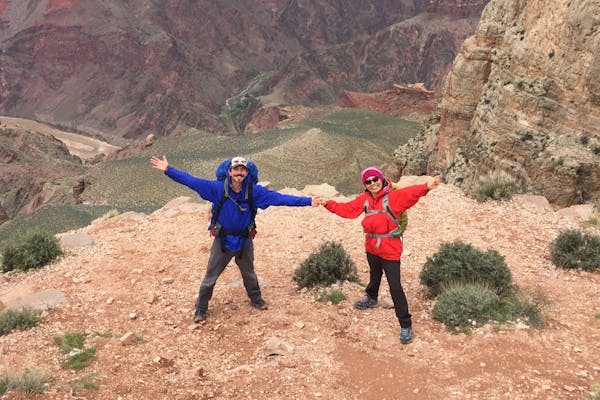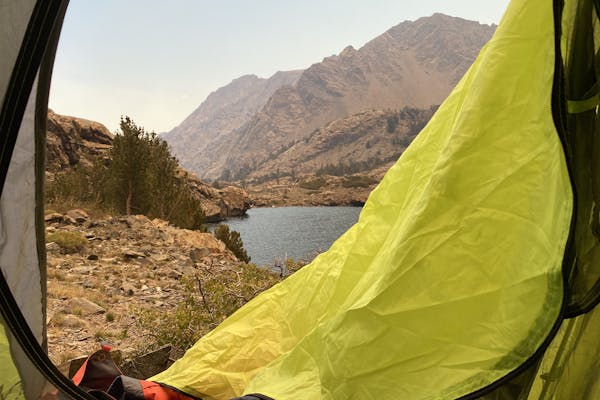Winter is here, and a polar vortex is heading our way.
The temperature is dropping like a stone, and ice and snow are piling up in the great outdoors. Some people hide. Others get out there. If you are one of the adventurous soles (sic), choosing the right pair of winter boots is not an easy feat. Many manufacturers tout a temperature rating. -40ᵒ F. Really? You mean if I go outside in -40ᵒ, my toes won’t freeze and fall off if I’m wearing those boots? Wait, are we on the southern-most continent observing penguins? Not sure how accurate those temperature ratings are.
We at Oboz think of picking a winter boot much like you would pick the proper outer layers for your torso. Currently, we insulate boots with 100, 200, and 400 grams of insulation. You might approach your choice of insulation this way:
100 grams = that comfy wool sweater
200 grams = that puffy mid-layer you stick in your pack in case you get cold
400 grams = that down parka you wear watching a football game outside in late season
Now we all run hot and cold. What you consider too warm, I might think could use a little more heat, and vice versa. Also, you should consider the activity. I doubt any of us are up to cross country skiing in 0-20 degrees while wearing a down parka. Even though it’s cold, you are going to sweat with the exertion. When you sweat, that water on your body will cool off and then make you cold. The same happens in your boots. Your feet sweat. Yep, even in cold…icy cold, weather. So, think about the type of activity and know your own body. If you run cold, go for more insulation.
Socks matter. The right sock choice is probably more important than boot choice. All insulated boots are waterproof which means there is a waterproof, breathable liner between your foot and the outside of the boot. Moisture, in the form of gas molecules, from inside can escape through the pores of the liner and dissipate to the outside while molecules of moisture from outside are too large to fit through the pores going into the boot. If you are wearing a cotton sock, moisture from your body will collect and overwhelm the ability of the liner to do its job. Your feet will become wet and the outside temperature will make them cold no matter what insulation. Synthetic moisture wicking socks are better. Wool is best, as wool fibers are able to wick moisture from your body to where it can easily evaporate and escape through the liner.

Now, go through the same exercise when choosing socks.
Are you being very active, wearing 100-gram boots, or standing in a freezing stadium? Do you want to wear a sweater, a puffy, or a down parka? Very often, customers wear heavy wool socks and complain the boots aren’t warm enough. If the socks you are wearing cause you to sweat too much, you will be cold. When I am hiking here in Bozeman, MT, I typically wear my Bridger 8” insulated with 200 grams of Thinsulate, a pair of regular weight Darn Tough, Smartwool, or Fits hiking socks, and gaiters to keep the snow out of the top of my boots. (Yes, the quickest way to get wet and cold is to kick snow into the tops of your boots because those wool socks will melt the snow and let it run down into boot.)
Another thing to consider is how you tie your boots. Some folks tie them so tightly, especially across the top of their foot, that they cut off circulation and don’t allow blood flow to reach your toes. Maybe try a window lace at the end of your boots so your toes get a little more movement and you are not pinching nerves and cutting circulation. If you are not hiking, keep the laces loose. If you are hiking, use a heel lock lace in combination with the window lace and your boot will stay on just fine.
Toe warmers and other gimmicks like battery operated warming socks may be good for ski boots
...but I don’t recommend them for hiking boots. Again, some folks warm themselves too much and wind up freezing. Instead of dropping coin on those items, invest in good boots and proper socks, check out the internet for great tying techniques, and most of all, know your body and the activity you plan to do in the outdoors during winter.
Get out there! It’s pretty fantastic to be hiking on a winter day in the mountains.






